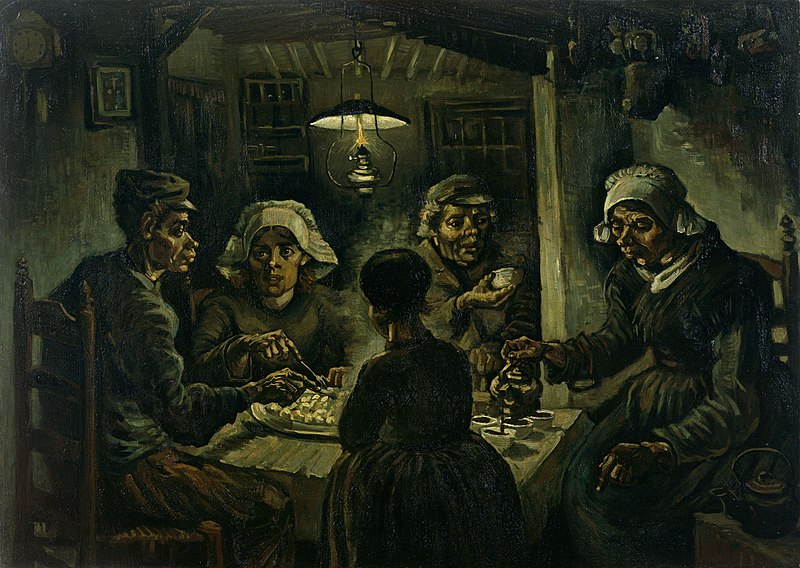The Forgotten
As far as I remember, Van Gogh was not the one who introduced to one of his world renowned paintings called, “Potatoes Eaters”. It was Htoo Ein Thin, a late famous singer from Burma (Myanmar). A song of his was dedicated to Van Gogh. A line of lyrics described about facial expression of Van Gogh’s Potatoes Eaters somewhere in the song. I was in my teen hood when I first noticed the phrase, “The Potatoes Eaters”. I wondered what’s wrong with their facial expressions and how they looked like?
The people in the painting are eating only potatoes. Why not bread and butter? Why not rice and some red meat? Have you ever eaten potatoes only as a meal? If we were to eat only potatoes as meals in our daily life, I’m sure our facial expressions will be the same way Van Gogh’s illustrated faces in this painting.
Destitute people in a society make scarcity and paucity their friends forever. Except very few, these impoverished people are forced to lead a struggling and detrimental hardship life by circumstances and socio-eco conditions they are in. Survival is the only priority in their daily life. Nothing else. Whatever they can earn usually goes for daily consumption of low-priced food. Potatoes!!!
A small dining room with a very dim light from an old oil lamp in the painting reflects the way poor people stay. It vividly highlights the space – freedom & liberty. Since survival scores “A” in the life of poor, a place to stay becomes “B”. Not a priority. As long as they have a shelter, they will be pleased to stay in for a rainy night and a sunny day. With no saving and no time to think of other priorities such as education to improve their life, theirs vicious cycle continues. For countless many unfortunates, generation to generation.
 Van Gogh is trying to describe the life of urban-poor in 1800s in Europe. My thoughts go beyond boundaries of cities, urbanized communities and normal circumstances. It forces me to think of survivors of manmade and natural disasters around the world. How are they copying their daily uncomfortable moments? Are their faces are disproportionately drawn up by situations they are in. How is their tomorrow going to be? Will there be any tomorrow for them? How about those refugees in the camps along the nations’ borders or in between states? Series of questions come to me as my train-thoughts moves on.
Van Gogh is trying to describe the life of urban-poor in 1800s in Europe. My thoughts go beyond boundaries of cities, urbanized communities and normal circumstances. It forces me to think of survivors of manmade and natural disasters around the world. How are they copying their daily uncomfortable moments? Are their faces are disproportionately drawn up by situations they are in. How is their tomorrow going to be? Will there be any tomorrow for them? How about those refugees in the camps along the nations’ borders or in between states? Series of questions come to me as my train-thoughts moves on.
These destitute families are usually forgotten in our society. We don’t usually think of how they live and what they have for meals. With candor, Van Gogh’s Potatoes Eaters remind me of my unfinished little works in my capacity for those forgotten people in life. I must not forget them.
Max
11 July 2011
[Children from an isolated Irrawaddy Delta village, which is accessible only by boat, waiting on Friday to receive donated food.]

No comments:
Post a Comment